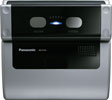

Arguably, the first form of fingerprinting recorded was in China in the 8th century AD when Chinese documents refer to fingerprints being impressed on business contracts. Due to the years of R&D into fingerprint technology therefore, biometrics today is dominated by fingerprint recognition.
Of course, today we know fingerprint biometrics is no longer the ultimate biometric solution, as about 2% of the world’s population (depending on who you ask) can not be reliably identified by their digits. Moreover, it is easy to damage ones fingers with manual work, and it is a contact biometric solution, which makes it unpopular among a few people.
The reality is that fingerprinting is going to be with us for a long time to come as other biometric technologies are only now starting to deliver the ease, speed and reliability of fingerprint solutions, albeit in contactless scenarios that are more difficult to fool. The cost of fingerprinting solutions is also lower due to its head start.
One of the currently available iris recognition solutions to deliver the speed and accuracy required by business and government access control and identification needs is the Panasonic BM-ET200 Iris Reader. The ET200 offers fast and accurate, contactless recognition suitable for any access control and identification environment.
Two mirrors are mounted on the front panel of the ET200, making it easier for users to align their eyes with the system’s cameras. The ET200 also comes with built-in voice commands to assist users in standing in the correct position when being enrolled or recognised. The actual recognition process takes approximately 0,3 seconds.
When Hi-Tech Security Solutions tested the solution, which is easily mounted into a portable casing, enrolment took about 20 seconds until the system was happy with the quality images it managed to capture and we had learned where to look. The confusion about standing too close or far becomes moot once the recognition system had been used a few times the user automatically places himself or herself in the correct position, making the recognition process faster and simpler. By the end of the test, the whole process of recognition takes a couple of seconds at most.
Most precise identification
Iris recognition uses individual differences in the complex patterns found within the iris of the human eye to authenticate individual identities. Today, iris recognition is the most precise of all biometric identification systems.
Not to be confused with another, less prevalent, ocular-based technology, retina scanning, iris recognition uses camera technology, with subtle infrared illumination reducing specular reflection from the convex cornea, to create images of the detail-rich, intricate structures of the iris. Converted into digital templates, these images provide mathematical representations of the iris that yield unambiguous positive identification of an individual.
Iris recognition efficacy is rarely impeded by glasses or contact lenses. Iris technology has the smallest outlier (those who cannot use/enrol) group of all biometric technologies. The only biometric authentication technology designed for use in a one-to-many search environment, a key advantage of iris recognition is its stability, or template longevity, as, barring trauma, a single enrolment can last a lifetime.
Iris patterns in humans stabilise between the ages of six months and two years and then remain unchanged for life. Moreover, they are difficult to imitate.
Panasonic says the ET200’s false acceptance rate is so low that the probability of falsely identifying one individual as another is virtually zero. The ET200 system boasts a false acceptance rate of 1 in 1,2 million.
Most beneficially, users with spectacles or sunglasses are recognised through their eyewear.
Tamper detection
The ET200 tamper protection feature prevents data from being extracted from the system. An audible alarm is triggered via the integrated tamper switches when someone tries to fiddle with the reader. The alarm signals are also transmitted to the access control system and administration server.
Panasonic also provides its own administration software. With additional (optional) user licences, the system can register and manage iris data for up to
10 025 users. The device in standalone mode recognises up to 50 users, ensuring specific personnel can still access sensitive areas should networks be down.
The ET200 can be used with smartcards and compare iris data on a card with the captured image to allow access. The benefit of smartcards is they provide application flexibility and do not require a central database. The system is also compatible with standard Wiegand interface protocol access control systems.
The system’s credentials were confirmed when Panasonic was awarded the Best Access Control Product in October last year for its BM-ET200 Iris Recognition Reader at the 8th annual Detektor International Awards in Stockholm Sweden.
For more information contact Peter Wiehahn, Panasonic Business Systems, +27 (0)79 966 9538, [email protected]

© Technews Publishing (Pty) Ltd. | All Rights Reserved.